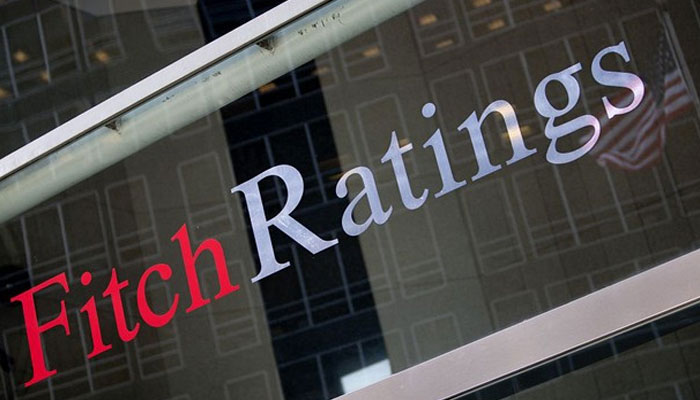NEW DELHI: Ahead of the general elections, Fitch April 4 retained India’s sovereign rating at ‘BBB-‘, the lowest investment grade, with stable outlook, saying a weak fiscal position continues to constrain its rating.
This is the 13th year in a row that global rating agency Fitch has rated India at ‘BBB-‘. It had last upgraded India’s sovereign rating from ‘BB+’ to ‘BBB-‘ with a stable outlook August 1, 2006.
“India’s ratings balance a strong medium-term growth outlook and relative external resilience stemming from strong foreign reserve buffers, against high public debt, a weak financial sector and some lagging structural factors,” Fitch Ratings said in a statement.
Stating that a weak fiscal position continues to constrain India’s sovereign ratings, Fitch said the next government’s medium-term fiscal policy will be of particular importance from a rating perspective.
“Significant and politically difficult fiscal deficit reduction would be key to meet the general government debt ceiling of 60 per cent of GDP by March 2025, as introduced in the Fiscal Responsibility and Budget Management (FRBM) Act in February 2018,” Fitch said while affirming the country’s long-term foreign-currency Issuer Default Rating (IDR) at ‘BBB-‘ with a stable outlook.
The general elections are being held in phases beginning April 11 and counting of votes will take place on May 23.
Fitch said that though the general elections result in some temporary uncertainty about the policy agenda, but over the past 30 years governments of different political persuasions have been generally reform-minded.
“Polls indicate that the next government will likely have a smaller majority in the lower house of Parliament, the Lok Sabha, than the current government and it might find it more difficult to garner support for major reforms such as the GST.
“However, there seems plenty of potential for a continued focus on reforms, for instance through enhancement of the efficiency and effectiveness of the administration and the legal and judiciary system,” the agency added.
Fitch said a robust growth outlook continues to support India’s credit profile and expects the country to grow at 6.8 per cent to 7.1 per cent in the current fiscal and the next, respectively, supported by accommodative monetary policy, easing of bank regulations, and government spending.
The RBI April 4 cut its GDP growth forecast for the current fiscal by 0.20 per cent to 7.2 per cent.
Fitch said according to the official data, India’s growth has averaged 7.5 per cent in the five years up to 2018-19, which is more than twice as fast as the historical ‘BBB’ peer median of 3.6 per cent.
The current government has implemented some ambitious and transformative reforms, notably the Goods and Services Tax (GST) and the Insolvency and Bankruptcy Code, while some other reforms so far seem to have had less traction, it added.
“Easing of foreign direct investment regulations and a reduction in red tape appear to have reduced transaction costs, but difficulties in doing business in India continue to linger, coinciding with lacklustre FDI inflows.
“Modest fiscal slippage relative to the central government’s own targets in recent years has resulted in a stalling of fiscal consolidation. Campaign promises to support farmers’ incomes, including direct cash transfers and farm loan waivers will, moreover, add to spending pressures in current fiscal,” the agency said.
The general government deficit has remained broadly stable at around 7 per cent of GDP in the past five years, while off-budget financing has gained importance and the general government debt increased to a Fitch-estimated 68.8 per cent of GDP in FY19 from 67.1 per cent in FY14, it added.
The government had revised upwards the fiscal deficit target for 2018-19 fiscal to 3.4 per cent from 3.3 per cent projected in the budget. For current fiscal, which begun April 1, the fiscal deficit target has been set at 3.4 per cent.
“India continues to exhibit some structural weaknesses relative to peers and is less developed on a number of metrics. Governance standards remain weak, as illustrated by a low score for the World Bank’s governance indicator (47th percentile versus the ‘BBB’ median of 59th percentile). India’s ranking on the United Nations Human Development Index (32nd percentile versus the ‘BBB’ median of 67th percentile) also indicates relatively low basic human development,” Fitch said.
On interest rate cut, Fitch expects the RBI to remain on hold for the remainder of 2019, and said that the central bank may look for opportunities for further easing.
With regard to the banking sector, Fitch estimated non-performing loan (NPL) ratio has improved to 10.8 per cent in December 2018, from 11.5 per cent in March 2018.
India’s relatively strong foreign-exchange buffers and the comparatively closed nature of its economy make the country less vulnerable to external shocks than many of its peers. Foreign-currency reserves equal seven months of current external payments, while gross and net external debt levels also compare well with those of peers.
However, India is not immune to emerging-market turmoil, owing to its current account deficit, which Fitch expects at 2.3 per cent in 2018-19.
Although Fitch has not tinkered with India’s rating, US-based rating agency Moody’s, however, had upgraded India’s sovereign rating from the lowest investment grade of ‘Baa3’ to ‘Baa2’ in November 2017.
As regards S&P, the rating agency has been maintaining India’s rating at ‘BBB-‘ since 2007. PTI








